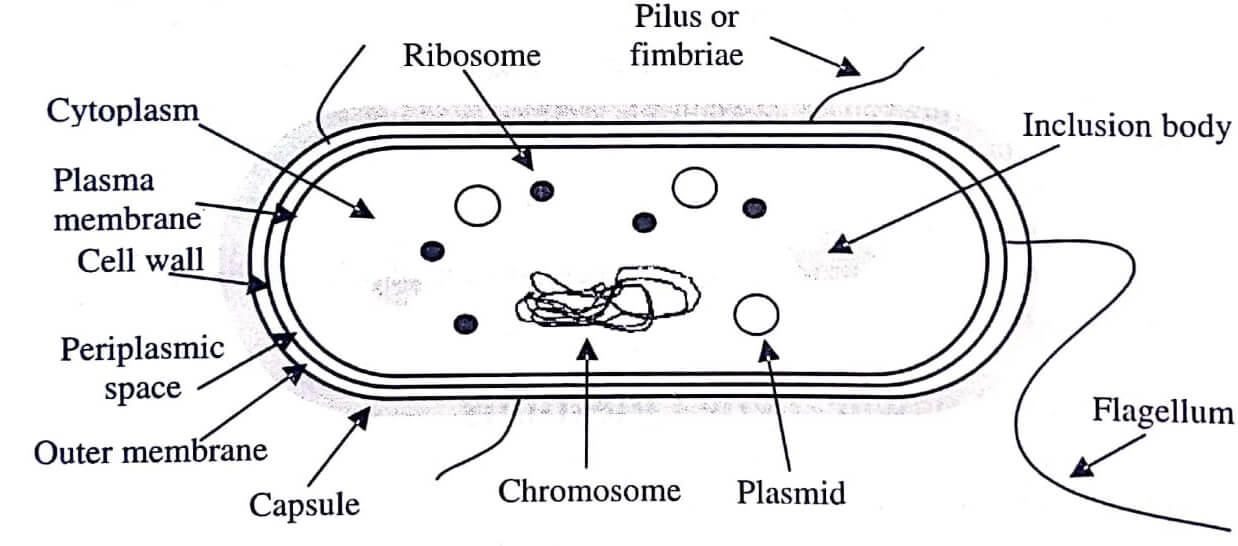Despite of being the most primitive and simplest microorganism, bacteria have well developed cell structures which possess many unique biological properties. Bacteria differ from archae bacteria and other eukaryotic microorganisms in many ways.
Due to their simplicity, bacteria had been studied thoroughly on the genetic level, revealing many biochemical and genetic principles that have been further used in various studies.
Cell-envelope or the outer layer of bacteria consists of two components (figure).
- A rigid cell wall, and
- Underlying cytoplasmic or plasma membrane.

Protoplasm of the cell includes cytoplasm, cytoplasmic inclusions (mesosomes, ribosomes, inclusion granules, and vacuoles) and single circular chromosome of DNA (figure). The protoplasm is enclosed by a cell-envelop. Along with these essential components, some bacteria have additional structures, e.g., flagella, capsule, and fimbriae.
On examining the bacterial cell, many cell components are observed; few of them are naturally common to almost all prokaryotes and some are present in only certain species.
In these structures, few lie externally to the cell wall, and few lie internally. Structures present on the external surface of the bacterial cell wall perform attachment, motility, conjugation, or protection.
| Read More Topics |
| Difference between prokaryotes and eukaryotes |
| The prime features of a prokaryotic cell |
| Function of autonomic nervous system |
| G-Protein coupled receptors |





